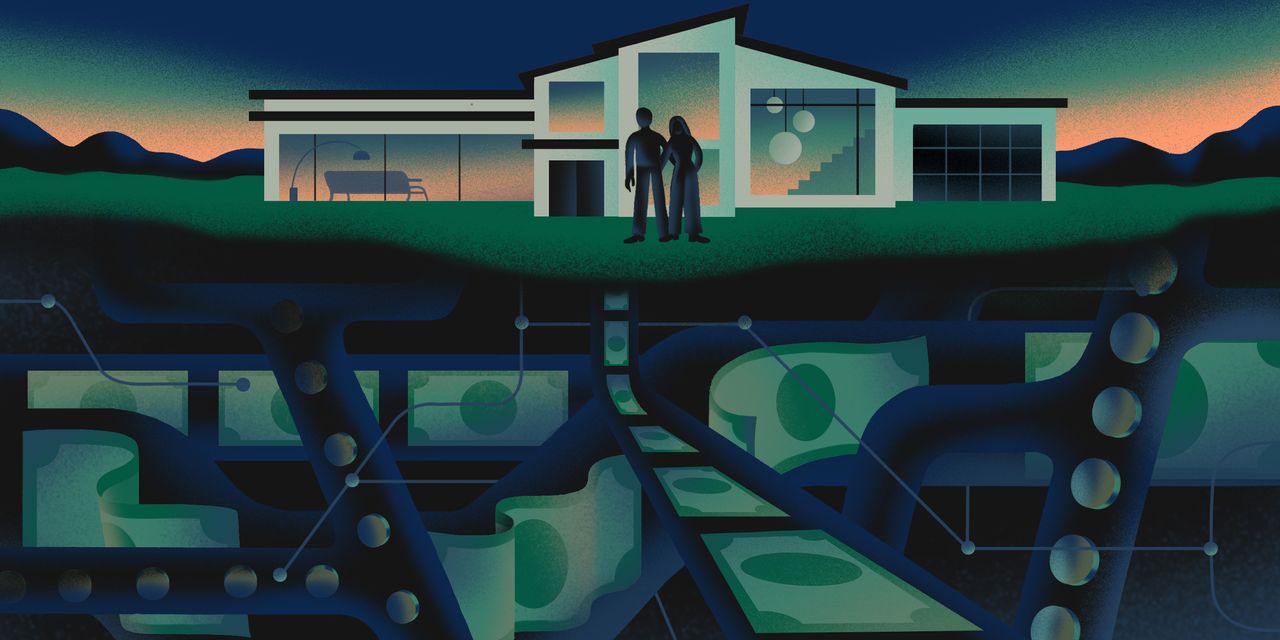
How does the American mortgage machine work
Every family needs a home, and so do many of the risks that arise from the standard 30-year mortgage in America.
Finding an investor to take each of these risks is the work of Rube Goldberg’s bizarre tool, the US housing finance industry. Investors who don’t understand how things fit together may one day find themselves scrambling for shelter.
This is part of the Heard Explainer series that brings our columnists’ insights into economic and business topics in the news.
Creators are probably the most popular players with investors. They sit at the front of the process and in many cases deal directly with borrowers. But for mortgages of typical terms and size, they are usually not the player who ultimately owns the loan.
One of the main reasons is the US housing market’s unique system of support for taxpayers, via government sponsored institutions.
FNMA 1.27%
And the
FMCC 0.87%
Buying loans from originators, guaranteeing them and reselling them to investors as mortgage securities. Thus, the economies of many originators are ultimately driven by the volume of loans they produce and sell via Fannie or Freddie. This business model also avoids lending risk and requires less capital, making it attractive to investors.
But selling loans is rather complicated. To get everyone else interested in buying or trading loans that are negotiated by third parties, a lot of things have to happen to commodify their 30-year mortgage. Originators sell mainly in standardized sets of mortgages that are organized into groups of half a point of interest rates, such as 2.5% or 3%. Investors buy segments of these pools in the form of securitization.
This price is not the same as the one paid by the borrower. A 3% mortgage may end up in the 2% range. This is because for further loan consolidation, portions of interest go to pay for other transfer services. One portion is for Fannie or Freddie, to cover the basic cost of the mortgage guarantee, as well as various adjustments on a single mortgage basis. Another piece is dedicated to the server, who takes over the collections from the borrower and then pays the investors, tax authorities, etc.
Against this long-running flow of fees, service workers bear certain risks. For example, when interest rates fall, more mortgages are refinanced and prepayed early, causing service workers to lose those payment flows. The servers also cover some missed payments before the mortgage actually falls behind. In an economy where a lot of people lose payments, that can lead to something. For example, the sudden rise in payment deferment during the pandemic has affected workers.
Originators may also have to use private mortgage insurance if the loan-to-value ratio is too high for the guarantor, possibly because the borrower is making a discount of less than 20%. Borrowers can pay these fees directly or indirectly through a higher mortgage rate.
Share your thoughts
How do you rate the mortgage application? Join the conversation below.
Even after paying for services and credit risk, the originator still cannot always count on a predictable selling price for each mortgage. Mortgage or relative pricing rates may move between groups during the long lockdown period, but borrowers prefer to “secure” the offered rates. There is a huge market for future delivery of mortgages, known as the TBA, or “to be advertised” market, that is used to effectively hedge the rate risk of lenders. However, it carries a cost that can vary with the duration of the protection.
The emerging technology component of the business uses data and analytics to synchronize the offered mortgage rate with how to hedge and sell, explains Vishal Garg, CEO of Better, a digital home ownership company. “You can be a better market participant by matching the end investor’s demand with the consumer,” he says. “The traditional loan officer cannot think of all scenarios.”
Originators have some natural counterparties that bear interest rate risk. Demand from investors, such as real estate investment funds in mortgages, that they are aware of how cheap they are to finance themselves, helps push the prices.
One of the big ways interest rate risk manifests itself is the speed with which people pay upfront. This, in turn, can affect what investors are willing to pay, because the securities derived from those mortgages are essentially shorter lived. So even as builders enjoy the benefits of scale when more people refinance, they may earn less on selling mortgages. Of course, when the Fed buys mortgage securities, and when the prices of other fixed-income assets are very low, the profits for the originators selling the mortgages can still be very large.
Smart investors will understand how changes in the market will affect their portfolios.
Write to Telis Demos at telis.demos@wsj.com
Corrections and amplifications
Originators may have to use private mortgage insurance if the loan-to-value ratio is too high for the guarantor. A previous version of this article incorrectly stated that originators may have to use private mortgage insurance if the loan-to-value ratio is too low for the guarantor. (Corrected January 3)
Copyright © 2020 Dow Jones & Company, Inc. all rights are save. 87990cbe856818d5eddac44c7b1cdeb8

“Analist. Schepper. Zombiefanaat. Fervente reisjunkie. Popcultuurexpert. Alcoholfan.”
